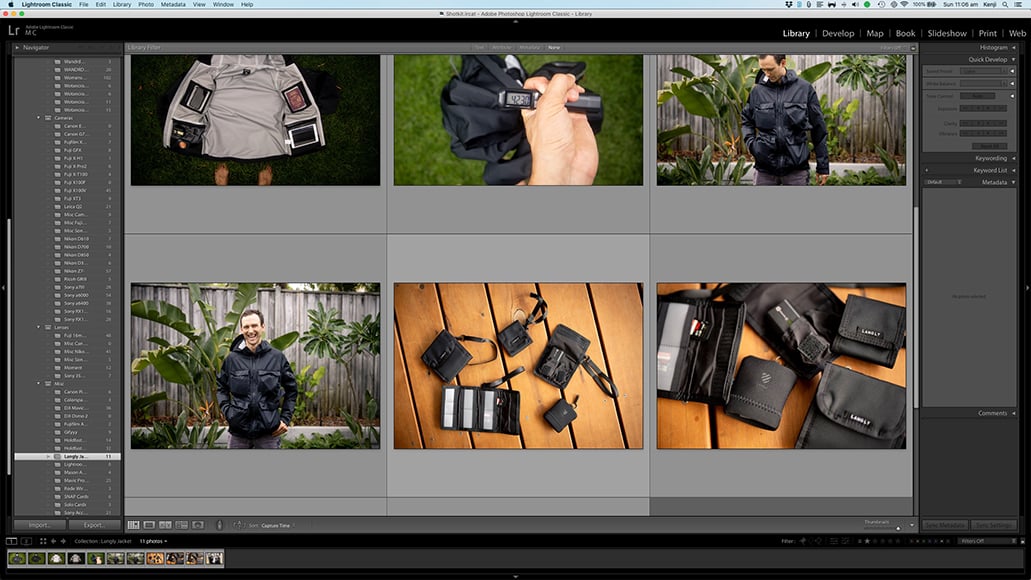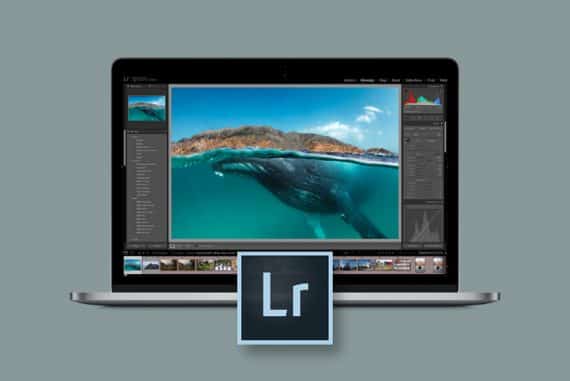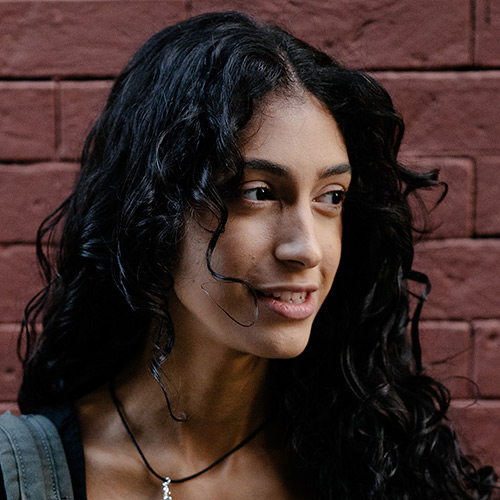
Lightroom vs Photoshop – Adobe Image Editor Comparison
In a showdown of Lightroom vs Photoshop, which image editing software is best for you? Or do you need both? Read our simplified guide to find out.
Lightroom | Photoshop | Software | By Usnea Lebendig
If you’re a photographer who wants to edit images on your computer, this Lightroom vs Photoshop comparison could help you save some money.
Lightroom vs Photoshop – Which is Better in 2024?
The main difference between Lightroom in comparison to Photoshop is that Lightroom is faster and better suited for a photographer’s workflow when compared to Photoshop which is superior for finer and quicker image editing than Lightroom in 2024. Adobe Lightroom offers RAW file processing and non-destuctive editing for photos while Photoshop offers various layering tools as well as powerful batch editing features.
Here in 2024, Adobe offers a ‘Photography Plan’ with online storage space, which includes both Lightroom and Photoshop.
Here’s the one that we use and recommend:
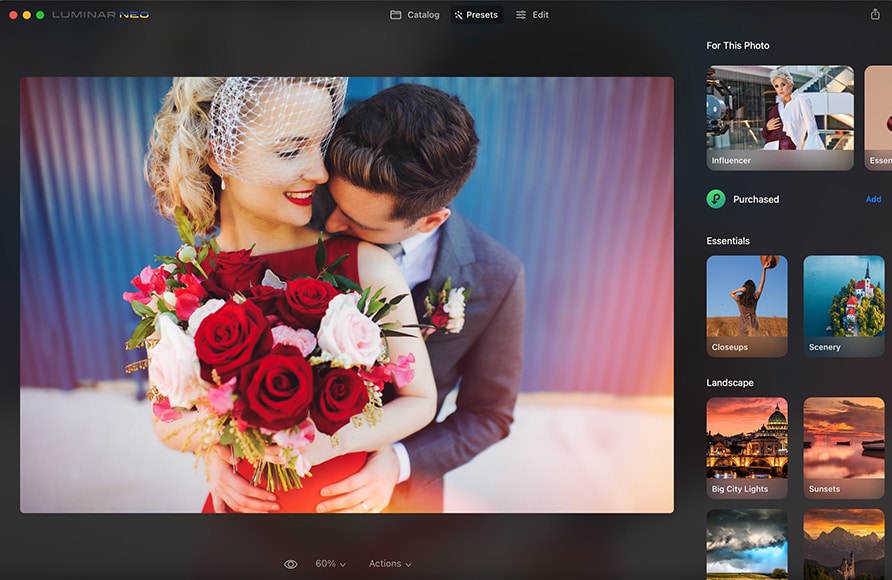
Edit photos quicker and easier than Lightroom or Photoshop with Luminar Neo.
Use Code shotkit10neo to save $10
The Creative Cloud online storage space means more security with automatic backups of the photos, as well as more options to work on your images using your phone or tablet, using the excellent Lightroom CC Mobile app and Photoshop for iPad.
Both Lightroom and Photoshop offer superb image editing options, and many people use Photoshop alongside Lightroom in their workflow.
To add to the confusion is the naming – Adobe Photoshop Lightroom, to give Lightroom its official title, is an odd choice by Adobe!
Let’s have a closer look at what separates them, so you can save more time in your workflow.
Lightroom or Photoshop? Key Differences
The biggest difference between the two programs is what they are designed for.
Lightroom is a photo editor made for a photographer’s workflow and efficient editing of your photos. By using Lightroom, you’ll be able to make edits to just about any image file in no time.
Photoshop is made for exceptionally powerful image manipulation and edits, although you may need a powerful computer to handle large PSD files – see the best laptops for Photoshop.
But how do these differences play out on a practical level?
- Image Organization
Lightroom’s database and catalog system allow photographers to keep all their images organized. You can forget about storing your images in folders and subfolders and forgetting where they are.
One source of confusion for beginners using Lightroom is the folder structure, which references your computer’s hard drive, but doesn’t track changes made outside of Lightroom – this can cause ‘missing images’, crashing, or other Lightroom related problems.
If you use multiple catalogs, you can select “Prompt me when starting Lightroom,” which will automatically allow you to open exactly those photos that you need.
Adobe Photoshop has no such abilities, let alone Photoshop Elements. Sure, you could use Adobe Bridge instead, but Lightroom is far superior – see Adobe Bridge vs Lightroom.
Adobe Lightroom also provides everything you could ever need from an image editor in terms of metadata, keywording, and searching. Metadata is especially important in web design and SEO, and being able to use presets to automatically add metadata is a huge time saver.
Collections and Smart Collections in Lightroom are designed to make managing and accessing your photos quick and easy, and Photoshop has no capabilities to handle multiple images in this way.
Winner: Lightroom
- Raw File Processing
Photoshop doesn’t have its own Raw file engine and needs to open a separate window with Adobe Camera Raw to work with Raw files. While Camera Raw works just fine with the Raw format, it adds a separate step to your workflow that isn’t really needed.
Lightroom is a photo editor that automatically renders Raw files and offers lens corrections to boot. All the adjustment sliders found in Adobe Camera Raw standalone can be found in Lr, too, so you’re not missing anything if you choose to use it. That’s why Lr is more convenient for raw files than Ps.
Winner: Lightroom
- Destructive vs Non-Destructive Editing
One of the more important features of Lightroom is that all of the edits you make to an image are non-destructive. What do I mean when I say that edits are “non-destructive”?
Basically, every adjustment you make to images is made to a separate copy with the original file of the image remaining unchanged. You can always go back to the original image with ease.
With Photoshop, it’s important to always make a backup image on your hard drive. Sure, you can undo actions using the history panel and use a tool, such as adjustment layers/Smart Objects, etc., but once you hit the Save button, that’s it. Every change you’ve made is final, and the original file will be altered.
Winner: Lightroom
- Layers and Composites
In the world of photo editing software, Photoshop is the master when it comes to image composites. Bringing multiple images together to compose a single piece of art is the place where Photoshop shines the brightest. Its selection and masking tools are unmatched and have long been the industry standard.
Sure, photo editing programs like Luminar and On1 also have layers for edits, but they’re fairly primitive when it comes to detailed selection/mask work.
Lightroom has no layer abilities whatsoever. It works seamlessly with Photoshop, so it’s assumed that you’ll do your layer work there and then return to Adobe Lightroom when all is said and done (which is super easy, quick keys, and all). There are masking and local adjustment options, but no compositing options.
Winner: Photoshop
- Batch Editing
If you’re a photographer that works with hundreds of photos per shoot, batch editing can literally be a lifesaver. Lightroom makes it super easy both to import multiple files and in the develop module. It’s also easy to create and use presets in the batch process.
Wedding and event photographers, in particular, can seriously benefit from this, as hundreds of photos taken under similar lighting situations can be adjusted at the click of a button.
Adobe Photoshop has no batch editing options, and you can only make edits to one image at a time.
Winner: Lightroom
- HDR and Panoramas
Both Ph and Lr have HDR and Panorama capabilities, but the results are quite different from one another.
Most photographers use plugins for HDR (i.e., Aurora HDR or Photomatix), but if you want complete manual control over your photos, Photoshop with layer and masking options is definitely more advanced.
Even more so with software updates. The latest version of Photoshop shines even more with new features, such as neural filters, sky replacement, live shapes, advanced noise reduction, histogram adjustments, real-time pattern previews, and more.
Other Ph versions also have advanced options for your images. For instance, Photoshop Elements offers guided landscape editing, moving, scaling, and duplicating, transforming images into GIFs with Sensei AI Technology, etc.
Photoshop also does some excellent stitching when it comes to panoramas. Lightroom can as well, but has a somewhat different effect, and you have less control over it.
Winner: Photoshop
- Presets vs Actions
Both programs have a means of automating tasks. In Photoshop, this is done via ‘Actions.’ In Lightroom, one uses presets. Both can seriously speed up the editing process.
That being said, Lightroom’s presets are easier to use. You can apply them with a single click and customize them easily.
Winner: Lightroom
- Advanced Image Editing Tools
If you do graphic design, you need much more than the basic photo editing tools. You will need to create GIFs, use the liquify tool, or want the option to do work in 3D, Photoshop has all of these features and much more.
Lightroom’s toolset is paired down to only have what photographers need. It’s more of a photo editor and image management system than a graphic design studio.
Winner: Photoshop
- Learning Curve
As mentioned before, because Adobe Lightroom only has tools that relate to images, this program is much easier to learn. Everything is set up in a logical, linear fashion, and the sliders are often self-explanatory.
The tools in Photoshop, on the other hand, take a lot longer to learn and understand. They’re super powerful and have what seems like an infinite amount of options per tool. With this program, you get supreme control over your image editing, but the learning curve is high.
That being said, there are hundreds of tutorials for both Ps and Lr on the internet, as well as multi-hour classes (both commercial and free).
Winner: Lightroom
Adobe Lightroom vs. Photoshop: Do You Need Photoshop?
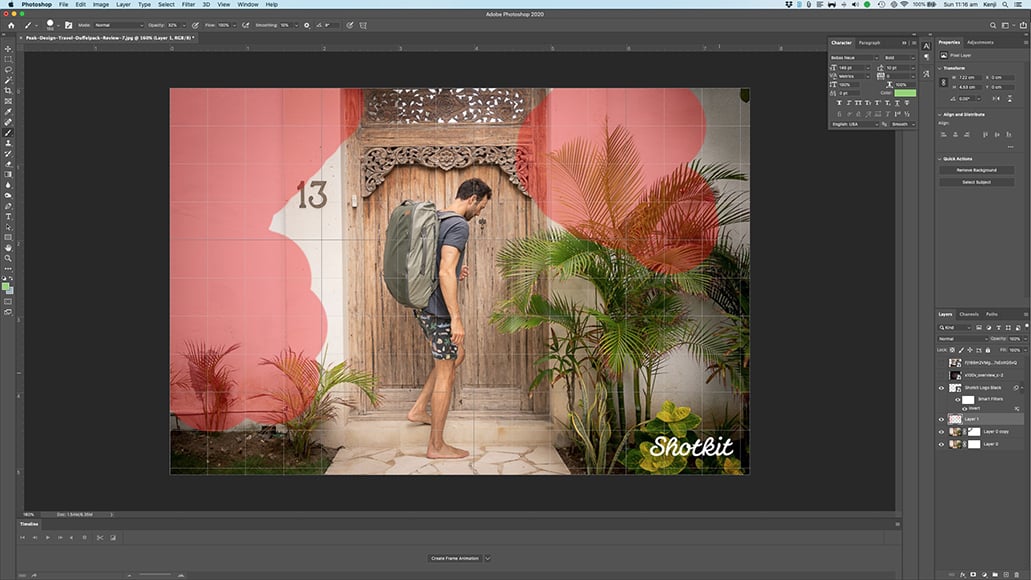
Photoshop is powerful but has a steep learning curve.
Photoshop comes in handy when you need editing options that aren’t in Lightroom.
Some photographers never need the deep editing abilities of Ps. Others will use it quite often.
To summarize, you need Ps if…
1. You do a lot of advanced retouching.
Maybe you want to make a waist slimmer or remove a double chin. Or you routinely remove people or objects out of images. Or you need pixel-level control of your editing flow. If you do any of these regularly, Photoshop is much better because it has a tool for everything.
2. You want to create composites.
If you want to combine two or more photos together, you’ll need the versatility of working with layers. Photoshop’s selection tool and layer controls are unmatched in the industry.
3. You like a hands-on approach to HDR photo and Panorama creation.
While there are a number of excellent free plugins for both Lightroom (here) and Photoshop (here), the latter provides a deeper level of hands-on editing for photos that some advanced photographers really appreciate.
4. You appreciate the power of advanced healing:
While Lightroom allows you to do basic healing (i.e. spot removal, removing blemishes and small objects, etc.), the content-aware tools in Photoshop are truly unmatched.
- See also: Photoshop vs Photoshop Elements and Lightroom vs Affinity Photo: Key Differences
When to Use Lightroom Exclusively
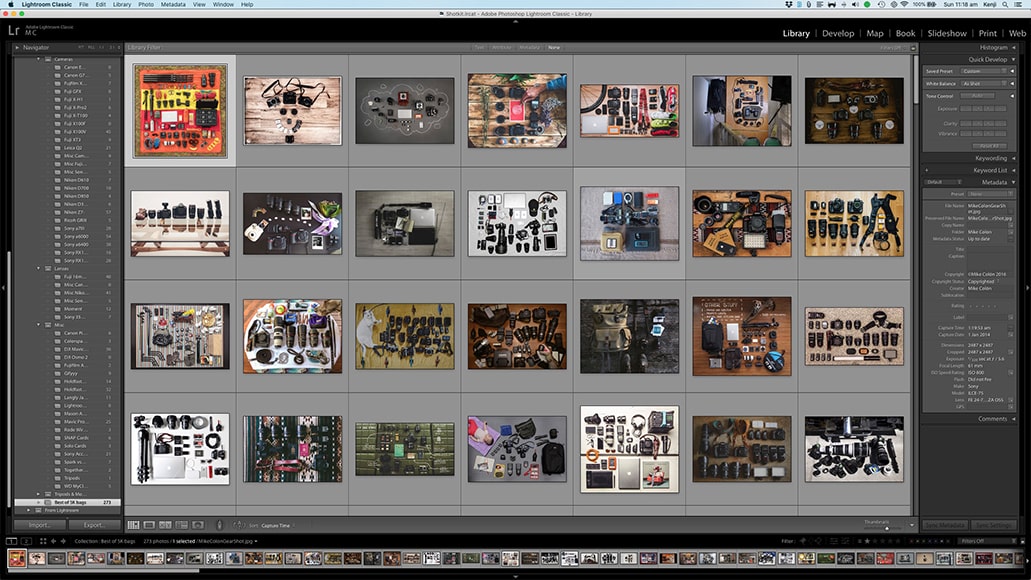
Lightroom is much simpler to use and features many useful photo management tools.
Most photographers can get away with using just Lightroom.
The photo adjustment tools do just about everything to your images that a photographer needs and anything Lightroom’s native tools don’t cover can often be found with plugins.
Having some doubts about software packages?
Well, if you primarily store your images in the cloud and you don’t need the advanced tools found in Photoshop, you’ll save money by choosing Adobe’s ‘Lightroom Plan’ which gives you 1TB for the same price as the ‘Photography Plan’ – check here for the latest pricing.
If, however, you plan on doing occasional graphic design in addition to photos, it would be well worth your while to keep Photoshop in your subscription.
Want to become a full-fledged digital media creative? You’ll probably want to look into Adobe’s Creative Cloud All Apps plan, which includes all 20 apps as well as 100GB of cloud storage – check here for the latest pricing.
Are There Any Good Alternatives?
Lightroom and Photoshop are undoubtedly excellent photo editors, but the subscription fee isn’t for everyone.
Fortunately, there are several great alternatives to Lightroom, but the one we recommend above all others is called Luminar Neo.
While Lightroom has better file management and keywording abilities, Luminar Neo is much easier to use and can perform powerful edits in a couple of clicks.
You can perform complex image editing tasks like smoothing skin, whitening teeth, replacing entire skies and removing backgrounds in seconds using Luminar Neo.
These kinds of edits aren’t easy in Lightroom or Photoshop and could take hours.
Best of all, you can buy Luminar, without having to enter into any subscription plan as you do with Lightroom and Photoshop.
Check out the latest Luminar pricing in your currency here >>
Photoshop and Lightroom Compared | What is Adobe Lightroom?
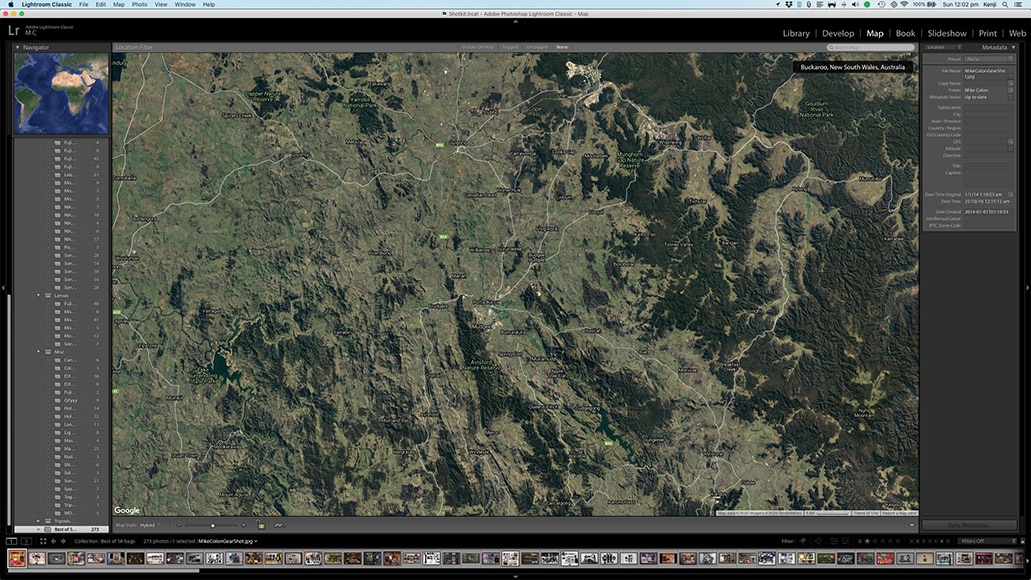
The little-known Lightroom Map module is useful for seeing where your images were taken.
Adobe Lightroom is a photo editing software for photographers that are in need of advanced image editing. Actually, its full name is “Adobe Photoshop Lightroom,” which some may find confusing because of the “Photoshop” part of the name. When you search more about its history, you realize it’s because this photo editing program was originally meant to complement Ps.
But instead of complementing each other, Ps and Lr came to be two most popular image editors with a number of similarities and differences. There are also other versions of the programs, such as Photoshop Elements and Lightroom Mobile, but the two original versions are unparalleled.
Lr provides powerful image cataloging and organization, Raw image file conversion, and the photo editing tools that photographers use most – see our full review for a deeper dive, and our guide on how to buy Lightroom for more info.
One of the biggest differences between Lr and Ps is Lr’s image management software.
Lightroom’s catalog and organization system is one of the best in its class, with incredibly detailed options for importing multiple photos, adding metadata, keywords, culling, creating collections, and image search.
The Lightroom batch editing and import options are also fantastic.
Unlike Ps, all of the image adjustment tools in Lr are specific to digital photography, and that part makes it easier to learn.
So, while Lr’s editing features are nowhere near as comprehensive as Ps’s, it tends to have everything most photographers need for a standard editing workflow of their photos – especially when paired with the use of plugins.
Lightroom also has a huge array of export options, from just about any print variables you can think of to direct uploading to social media sites like Flickr and Facebook.
In short, Lr was designed for a photographer’s end-to-end post-processing workflow.
From importing images into your computer to standard adjustments and exporting, Lr covers all the bases in a way that creates the most efficient workflow.
Don’t already own Lightroom?
Get the most popular Adobe Lightroom + Photoshop 1TB plan that so many other professional photographers use – including everyone on the Shotkit team!
Photoshop and Lightroom Compared | What is Adobe Photoshop?
Adobe Photoshop is the most powerful graphic editor available today.
Originally created as a simple photo editing tool, it has since expanded to cover the whole range of what can be done with graphics.
From pixel-level editing to 3D modeling and GIF creation, there’s little that Ps can’t do.
Ps gives you complete control over editing images. It’s a graphics editor’s dream… but not so great for professional photographers.
Photoshop isn’t set up for a photographer’s workflow. It doesn’t have much in the way of image management, nor does it have batch processing. Instead, it’s designed to allow you to get into the nitty-gritty of each image, making changes with high finesse.
This being the case, it should come as no surprise that it’s also a very complex program that requires a lot of work and dedication to master.
Ps has so many nuanced tools that, depending on what you want to use it for, it can take over 100 hours of learning to become truly proficient in it.
Because of its power and functionality, Ps is used by everyone from graphic designers and publishers to architects and animators.
Professional photographers with advanced editing needs also use it, but rarely without Lr or Adobe Bridge as a way to access images.
Don’t already own Photoshop?
Don’t try and buy it on its own – it’s better value if you get the same Photoshop + Lightroom 1TB plan (mentioned above). Here’s the link again:
Frequently Asked Questions
How is Lightroom different from Photoshop?
Even though Lr and Ps have a number of similarities, Lr is an image editing software designed specifically for photographers. This editing tool is better for things like processing all kinds of image files, edit photos in large batches, etc. Ps, on the other hand, has more powerful tools and features that give you complete control over any kind of image manipulation tools possible. You’ll benefit from using Ps for all kinds of photo edits, while photographers will get more from Lr.
Is Lightroom good for beginners?
Lr is an excellent program for beginners and is a relatively easy editing software to learn. In addition to being an editing tool, using Lr is also a fantastic way to manage and print your images (especially when you work with multiple photos and want efficiency).
Is Lightroom included in Photoshop?
Adobe Lightroom is a separate program to Photoshop, but they are offered together in one subscription as part of Adobe’s Photography Plan.
Can I buy Photoshop outright?
No, you can’t buy Photoshop outright. However, you can enjoy its features via a Creative Cloud subscription.
How much is Photoshop a year?
As for the Adobe Photoshop price, the yearly subscription plan costs around $250. You can either pay the full amount upfront or pay it in monthly instalments.
How much does Adobe Photoshop cost?
The cost of Adobe Photoshop depends on the type of subscription plan you choose. Adobe offers both monthly and yearly plans.
How much is Photoshop a month?
Photoshop costs around $31.50 per month. However, it can go down to $20.99 if you subscribe to the yearly-billed monthly plan.
Photoshop vs Lightroom: Final Words

You can even build webpage galleries with Lightroom Classic in conjunction with CC.
In the world of digital photography, the reality is that most photographers will spend the bulk of their time using the Lightroom photo editor.
The difference between Lightroom and Photoshop, both popular Adobe software applications, lies in their primary functionality and target users.
Using Adobe Photoshop Lightroom streamlines a photographer’s workflow while providing the majority of tools for edits any photographer needs.
Those who use Ps tend to be graphic designers or those needing to achieve very specific effects, like healing brush or copying specific pixels from one photo to another.
It’s for those with more complex image editing needs and/or those who want to have complete creative control over their digital creations.
The final takeaway? Depending on your editing, you may very well be able to do without using Photoshop and use Lightroom editing tools for all your photo edits.
That being said, if you don’t use cloud storage and you occasionally do advanced image editing, it doesn’t hurt to keep Photoshop within close reach. Both Photoshop and Lightroom are useful in certain situations.
Things such as background removal, for example, are much easier with Ps than with Lr.
And again, don’t forget about Adobe s Creative Cloud. If you really want to get into the world of digital media, it’s still an unprecedented industry leader.
Being able to work across all your devices (both home computer and mobile phone/tablet) really is great for workflow, not to mention a whole lot of fun.
Thus, the final impression and piece of advice on the whole Lightroom vs Photoshop debate: if you can, use both programs.
Our recommendation: the 1Tb Adobe Photography Plan is the best of both worlds since it includes both Lr and Ps, as well as all the cloud-syncing / mobile app advantages.
Check the latest pricing by clicking the button below, and leave us any questions in the comments.
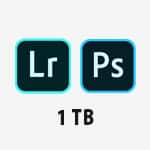
Includes both Lightroom and Photoshop. The best of both worlds for photographers of all standards.





